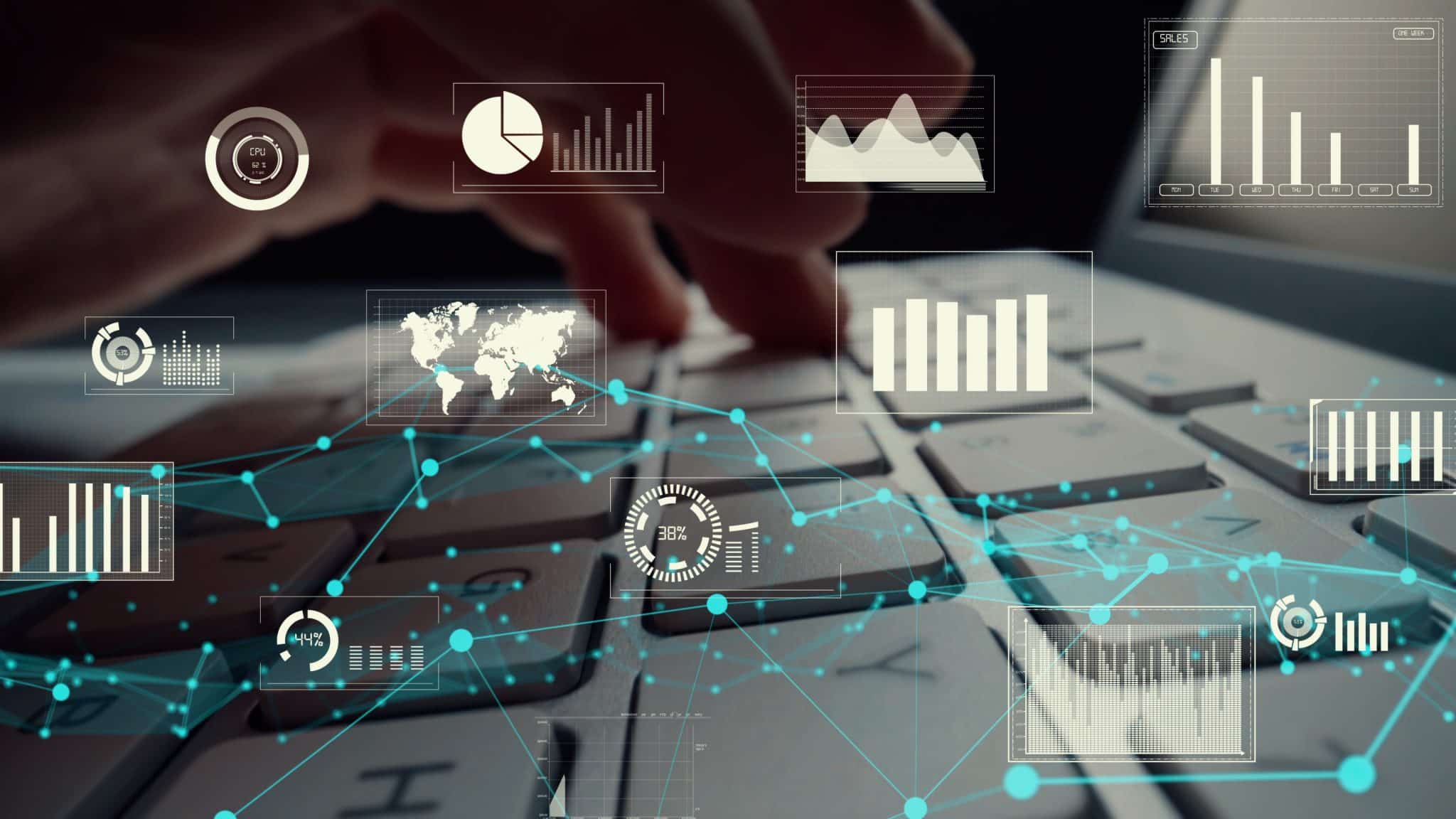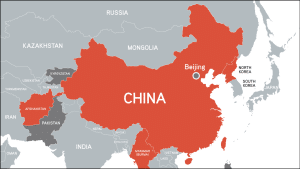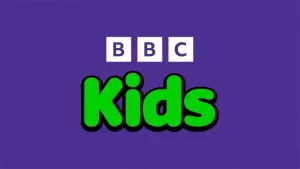-
- 1. 29 Billion Connected Devices, Including 18 Billion IoT Devices, were Expected by End-2022.
- 2. The Usage of Utility IoT is Projected to Hit $129.1 Billion by 2032.
- 3. Global IoT Security Spending will Reach $1.1 Trillion by 2023.
- 4. Building Automation to Reach $148.6 Billion in Revenue by 2027.
- 5. Wearable Devices Market to be Worth $1.1 Billion by 2022.
- 6. Apple Led the Smartwatch Market with a 36.1% Share in Q1 of 2022.
- 7. More Smart Cities are Expected to Emerge Shortly.
- 8. The Number of IoT Devices is Expected to Reach 30.9 Billion by 2025.
- 9. Every Second, 127 New IoT Devices Connect to the Internet.
- 10. Global Consumer Technology Spending was Expected to Reach $505 Billion at the End of 2022.
- 11. The Global IoT Market is Projected to Reach $875 Billion in 2025, With a CAGR of 26.9%.
- 12. Security Remained the Top Focus for the IoT Industry in 2022.
- 13. The IoT Healthcare Market is Expected to Reach $158.1 Billion by the End of 2022, With a CAGR of 28.6%.
- 14. In the Coming Years, 100% of the Global Population will Have LPWAN Coverage.
- 15. Cellular IoT Connections are Expected to Reach 3.5 Billion by the End of 2023, with China Being the Main Growth Driver.
- 16. By 2025, the Internet of Things (IoT) can Generate $4 Trillion to $11 Trillion for the economy.
- 17. By 2030, the Industrial Internet of Things (IoT) Market Could Generate $14.2 Trillion Economically.
- 18. Specific Utility Industries Will Spend $40 Billion Each on IoT Platforms, Systems, and Services.
- 19. There are 3 Top IoT Enterprise Project Segments and Regional Distribution.
- 20. Cost Savings is the Primary Revenue Driver for 54% of Enterprise IoT Projects.
- 21. The Main Aims of IoT Deployment Vary by Country, With 23% of Chinese Companies Using it to Increase Competitiveness.
- 22. 58% of Producers Suggest IoT Must Transform Industrial Operations Digitally.
- 23. Over 80% of Senior Business Executives Across Industries Say IoT is Essential to Their Business.
- 24. Real-world Benefits from IoT Could Exceed Original Expectations by 16 to 17%.
- 25. 93% of Enterprises have Adopted IoT Technology.
- 26. IoT is a Strategic Necessity for Industrial Operations.
- 27. IoT in Healthcare will Hit $158 Billion in 2022.
- 28. IoT in the Retail Market Will Reach $35.5 Billion in 2025.
- 29. The Government Sector is the Slowest to Adopt IoT but Progressing.
- 30. Companies will Invest up to $15 Trillion in IoT by 2025.
- 31. The Telecom Industry Leads in the Average Implementation of High-potential Use Cases.
- 32. US Leads in Full-scale Deployment of IoT in Operations.
- 33. Samsung Tops IoT Consumer Electronics Patents in Q1 2022.
- 34. 29% of Developers for Connected Devices Favor Microsoft Azure IoT Suite.
- 35. Understanding and Implementation of IoT Among Business Leaders.
- 36. Industries With the Most Security Breaches are Adopting IoT.
- 37. The Projected Value of the Global IoT Security Market by 2028 is $961.6 Billion.
- 38. Challenges in Extracting Value From IoT-related Data.
- 39. The Future of IoT Management for CIOs.
- 40. The Retail IoT Market Will Reach a Valuation of $94.44 Billion by 2025.
- 41. Growth of the Global Automotive Internet of Things (IoT) Market to Hit $104.2 Billion by 2023 Year-end.
- 42. The Projected Value of the Global Healthcare IoT Market was Over $158 Billion in 2020.
- 43. The Global IoT Market will Generate Between $4 Million and $12 Trillion by 2025.
- 44. International Smart Homes Were at $58.7 Billion in 2020.
- 45. By 2025, 73.1 ZB of Data will Generate.
-
- 1. 29 Billion Connected Devices, Including 18 Billion IoT Devices, were Expected by End-2022.
- 2. The Usage of Utility IoT is Projected to Hit $129.1 Billion by 2032.
- 3. Global IoT Security Spending will Reach $1.1 Trillion by 2023.
- 4. Building Automation to Reach $148.6 Billion in Revenue by 2027.
- 5. Wearable Devices Market to be Worth $1.1 Billion by 2022.
- 6. Apple Led the Smartwatch Market with a 36.1% Share in Q1 of 2022.
- 7. More Smart Cities are Expected to Emerge Shortly.
- 8. The Number of IoT Devices is Expected to Reach 30.9 Billion by 2025.
- 9. Every Second, 127 New IoT Devices Connect to the Internet.
- 10. Global Consumer Technology Spending was Expected to Reach $505 Billion at the End of 2022.
- 11. The Global IoT Market is Projected to Reach $875 Billion in 2025, With a CAGR of 26.9%.
- 12. Security Remained the Top Focus for the IoT Industry in 2022.
- 13. The IoT Healthcare Market is Expected to Reach $158.1 Billion by the End of 2022, With a CAGR of 28.6%.
- 14. In the Coming Years, 100% of the Global Population will Have LPWAN Coverage.
- 15. Cellular IoT Connections are Expected to Reach 3.5 Billion by the End of 2023, with China Being the Main Growth Driver.
- 16. By 2025, the Internet of Things (IoT) can Generate $4 Trillion to $11 Trillion for the economy.
- 17. By 2030, the Industrial Internet of Things (IoT) Market Could Generate $14.2 Trillion Economically.
- 18. Specific Utility Industries Will Spend $40 Billion Each on IoT Platforms, Systems, and Services.
- 19. There are 3 Top IoT Enterprise Project Segments and Regional Distribution.
- 20. Cost Savings is the Primary Revenue Driver for 54% of Enterprise IoT Projects.
- 21. The Main Aims of IoT Deployment Vary by Country, With 23% of Chinese Companies Using it to Increase Competitiveness.
- 22. 58% of Producers Suggest IoT Must Transform Industrial Operations Digitally.
- 23. Over 80% of Senior Business Executives Across Industries Say IoT is Essential to Their Business.
- 24. Real-world Benefits from IoT Could Exceed Original Expectations by 16 to 17%.
- 25. 93% of Enterprises have Adopted IoT Technology.
- 26. IoT is a Strategic Necessity for Industrial Operations.
- 27. IoT in Healthcare will Hit $158 Billion in 2022.
- 28. IoT in the Retail Market Will Reach $35.5 Billion in 2025.
- 29. The Government Sector is the Slowest to Adopt IoT but Progressing.
- 30. Companies will Invest up to $15 Trillion in IoT by 2025.
- 31. The Telecom Industry Leads in the Average Implementation of High-potential Use Cases.
- 32. US Leads in Full-scale Deployment of IoT in Operations.
- 33. Samsung Tops IoT Consumer Electronics Patents in Q1 2022.
- 34. 29% of Developers for Connected Devices Favor Microsoft Azure IoT Suite.
- 35. Understanding and Implementation of IoT Among Business Leaders.
- 36. Industries With the Most Security Breaches are Adopting IoT.
- 37. The Projected Value of the Global IoT Security Market by 2028 is $961.6 Billion.
- 38. Challenges in Extracting Value From IoT-related Data.
- 39. The Future of IoT Management for CIOs.
- 40. The Retail IoT Market Will Reach a Valuation of $94.44 Billion by 2025.
- 41. Growth of the Global Automotive Internet of Things (IoT) Market to Hit $104.2 Billion by 2023 Year-end.
- 42. The Projected Value of the Global Healthcare IoT Market was Over $158 Billion in 2020.
- 43. The Global IoT Market will Generate Between $4 Million and $12 Trillion by 2025.
- 44. International Smart Homes Were at $58.7 Billion in 2020.
- 45. By 2025, 73.1 ZB of Data will Generate.
The Internet of Things (IoT) has changed how we use technology daily. The broad network of smart devices, which has billions of connected gadgets, is producing volumes of data and propelling substantial breakthroughs in a wide range of businesses. Undoubtedly, the system has become an item of interest, not just for business but for industrialization. With global prevalence at such a fast rate, the world of IoT is predicted to sit as the next big thing.
This article examines several astounding facts demonstrating IoT’s growth and influence. We can see IoT’s usefulness from the number of connected IoT devices to the economic value produced by offering a window into the intriguing world of IoT statistics.
Top Picks
- The number of IoT devices worldwide will surpass 64 billion by 2025.
- By the end of 2022, the IoT network is estimated to connect 29 billion devices.
- It is anticipated that by 2022, LPWAN coverage will be available to the entire global population.
- By 2025, the economic value generated by IoT can range from $4 trillion to $11 trillion.
- Cost savings are the primary revenue driver for 54% of enterprise IoT projects.
- The market for wearable devices is expected to hit $1.1 billion by 2022.
- Most organizations (97%) face challenges extracting value from IoT-related data.
- The IoT market in banking and financial services is projected to grow to $2.03 billion by 2023.
Asides from these, the rest are divided into market size stats, business adoptions, news, and general exciting statistics.
Informative IoT Statistics
It is exciting to know that IoT has tremendous benefits, but first, we need to learn critical details about the sector.
1. 29 Billion Connected Devices, Including 18 Billion IoT Devices, were Expected by End-2022.
The number of connected devices was expected to surge to 29 billion by 2022, with 18 billion IoT devices. 5G technology will be pivotal in enabling organizations to explore new markets and unlock potential revenue streams.
Businesses can leverage IoT technologies and expand their operations, paving the way for innovative applications and services in various industries.
(Source: Ericsson)
2. The Usage of Utility IoT is Projected to Hit $129.1 Billion by 2032.
With a CAGR of 11.9%, the worldwide utility IoT market is anticipated to grow to $129.1 billion by 2032. The desire for smart grids, the need to increase operational efficiency, and the expanding use of smart meters are driving the expansion of the utility IoT market.
(Source: Global News Wire)
3. Global IoT Security Spending will Reach $1.1 Trillion by 2023.
As the number of connected devices rises, the IoT global security market will reach $1.1 trillion by 2023. With a CAGR of 18.4%, the market is now estimated at $450 billion. The need for IoT security is expanding, with over 8 billion connected devices present today and 50 billion predicted to exist by 2023.
(Source: Exploding Topics)
4. Building Automation to Reach $148.6 Billion in Revenue by 2027.
Building automation is projected to generate $148.6 billion by 2027 in sales globally. The CAGR is expected to be on the surge, too. It seems the expansion drives the desire for high work efficiency, operational ethics, and the growing acceptance of IoT.
(Source: Markets and Markets)
5. Wearable Devices Market to be Worth $1.1 Billion by 2022.
The wearable tech field was predicted to be worth $1.1 billion in 2022. The report suggested that smartwatches, trackers, and other wearable technology will keep recording a significant rise.
(Source: Statista)
6. Apple Led the Smartwatch Market with a 36.1% Share in Q1 of 2022.
With a 36.1% share, Apple led the smartwatch industry in the first quarter of 2022. Samsung took second place with 10.1% shares. Interestingly, Huawei and Xiaomi are third and fourth in numbers, respectively.
(Source: Counterpoint Research)
7. More Smart Cities are Expected to Emerge Shortly.
The concept of tech-advanced cities is evolving fast. More and more cities adopt innovative technology to improve the lives of their citizens. The establishment of digital cities plans to use IoT technology to connect and collect data from different sensors and devices. This new update can improve traffic flow, public safety, and city growth.
(Source: Enterra Solutions)
Market Size Statistics of IoT
The world’s market remains all in favor of IoT technology. This acceptability is evident in the growing market size, which we will look into through these stats:
8. The Number of IoT Devices is Expected to Reach 30.9 Billion by 2025.
The number of linked devices on the Internet of Things (IoT) is predicted to reach 30.9 billion by 2025. This is more than the roughly 10 billion mobile devices thought to be in use now.
(Sources: Business Insider, IoT Analytics, Gartner, Intel)
9. Every Second, 127 New IoT Devices Connect to the Internet.
IoT technology is growing significantly, with a predicted sum of 127 gadgets said to be connected to the Internet every second. This shows that billions of devices related to IoT are in use now, which will only increase.
(Source: McKinsey)
10. Global Consumer Technology Spending was Expected to Reach $505 Billion at the End of 2022.
Consumer technology expenses, which are not limited to purchases of gadgets like TVs, PCs, tablets, and smartphones, are an extensive term. However, in 2022, the worldwide sector was anticipated to expand to $505 billion from the earlier $450 billion mark.
(Source: Statista)
11. The Global IoT Market is Projected to Reach $875 Billion in 2025, With a CAGR of 26.9%.
There is an expectation that the IoT global market will expand at light speed and hit $875 billion in 2025. This is considerable growth compared to the $330.6 billion value in 2020.
(Source: Market Data Forecast)
12. Security Remained the Top Focus for the IoT Industry in 2022.
The market for IoT technology is opening up quicker than anyone imagined, and with that pace arises security concerns. Hence, security remained the industry’s top priority throughout 2022.
(Source: Velvetech)
13. The IoT Healthcare Market is Expected to Reach $158.1 Billion by the End of 2022, With a CAGR of 28.6%.
The Internet of Things (IoT) dramatically impacts the healthcare sector. The use of IoT devices to gather and analyze data in various ways has given rise to fresh and creative applications in the healthcare field.
(Source: DataProt)
14. In the Coming Years, 100% of the Global Population will Have LPWAN Coverage.
LPWANs, for Low-power wide-area networks, are mobile networks created to offer long-distance communications with minimal power usage. LPWANs are perfect for IoT applications because they connect several devices over a large region without using much electricity.
Only 20% of the worldwide population had coverage in 2017. However, in the upcoming years, this is anticipated to change drastically.
(Source: McKinsey)
15. Cellular IoT Connections are Expected to Reach 3.5 Billion by the End of 2023, with China Being the Main Growth Driver.
Cellular IoT refers to the use of cellular networks to connect IoT devices. Ericsson says this connection growth may likely hit 3.5 billion by 2023. This significantly increased from the 1.9 billion cellular IoT connections used in 2020.
(Source: Ericsson)
Industry-Based Statistics on How IoT Impact Businesses
This session will highlight the economic importance of IoT and how it impacts businesses. Read on.
16. By 2025, the Internet of Things (IoT) can Generate $4 Trillion to $11 Trillion for the economy.
The most significant contribution to the IoT’s economic value is expected to come from factories. IoT-enabled factories could save $1.2 trillion to $3.7 trillion in operating costs by 2025. IoT sectors expected to see significant economic benefits include smart cities, healthcare, retail, and transportation.
(Source: McKinsey)
17. By 2030, the Industrial Internet of Things (IoT) Market Could Generate $14.2 Trillion Economically.
According to Forbes, the IIoT market could generate $14.2 trillion for the global economy by 2030. The CAGR may also likely increase tremendously. Also, Morgan Stanley’s prediction of the industrial IoT market size reaching $110 billion by 2020 and $124 billion in 2021 came close.
(Source: Forbes, Morgan Stanley)
18. Specific Utility Industries Will Spend $40 Billion Each on IoT Platforms, Systems, and Services.
The Internet of Things (IoT) is a rapidly growing market, and it will impact a wide range of industries significantly. Some of them are discrete manufacturing, transportation, and logistics.
(Source: Statista)
19. There are 3 Top IoT Enterprise Project Segments and Regional Distribution.
The Internet of Things (IoT) is a rapidly growing market, and it is popular in many industries. According to IoT Analytics, the top 3 segments for enterprise IoT projects are Smart City, Connected Industry, and Connected Building.
(Source: IoT Analytics)
20. Cost Savings is the Primary Revenue Driver for 54% of Enterprise IoT Projects.
The Internet of Things (IoT) is a rapidly growing market that improves business efficiency, productivity, and safety. IoT Analytics says cost savings is the primary revenue support for over 50% of business-related IoT projects.
(Source: IoT Analytics)
21. The Main Aims of IoT Deployment Vary by Country, With 23% of Chinese Companies Using it to Increase Competitiveness.
According to Ovum, the top goal of enterprise IoT deployment varies by country. Unlike 23% of Chinese companies that use it to compete, countries like the United States, the United Kingdom, France, and Australia aim to reduce costs through IoT deployment.
(Source: Ovum)
22. 58% of Producers Suggest IoT Must Transform Industrial Operations Digitally.
The Internet of Things (IoT) is significantly impacting the manufacturing industry. According to a survey by GE, 58% of manufacturers say IoT will transform industrial operations digitally.
(Source: GE)
23. Over 80% of Senior Business Executives Across Industries Say IoT is Essential to Their Business.
The Internet of Things (IoT) is impacting firms across various industries. According to a survey by Statista, 28% have severe investing plans, while a set-aside 54% believe in the results of IoT.
(Source: Statista)
24. Real-world Benefits from IoT Could Exceed Original Expectations by 16 to 17%.
The study by Fierce Electronics also found that only 29% of executives confirmed that IoT strategies would improve business efficiency.
(Source: Fierce Electronics)
25. 93% of Enterprises have Adopted IoT Technology.
A whopping 93% of enterprises have adopted IoT technology, with 77% of executives in the sector believing it will allow them to transform offices into smart workplaces. IoT devices automate tasks, collect data, and improve the overall efficiency of the workplace.
(Sources: Fierce Electronics, Security Today)
26. IoT is a Strategic Necessity for Industrial Operations.
A survey by DataProt found that 58% of manufacturers see IoT as a strategic necessity for transforming industrial processes. The importance and effectiveness of IoT are broader than specific industries, with over three-fifths of organizations seeing this technology as necessary in digitizing their operations. The goal is to find new ways to improve efficiency where SaaS and other companies thrive.
(Source: DataProt)
27. IoT in Healthcare will Hit $158 Billion in 2022.
The Internet of Medical Things (IoMT) sector will reach $158 billion by 2022. Patient monitoring is the number one use of IoT in the healthcare sector, followed by remote operation and control and location-based services.
Executives in the healthcare sector cite increased innovation as the top benefit of IoT. Energy meters, imaging devices, and X-rays also make use of IoT.
(Source: Link Springer)
28. IoT in the Retail Market Will Reach $35.5 Billion in 2025.
Generally, IoT technology offers various applications in the retail industry, particularly in enhancing the in-store shopping experience. The IoT market in the retail sector will experience substantial growth, with a projected value of $35.5 billion by 2025.
Comparatively, a forecast from 2020 estimated the market size to be $14.5 billion, indicating a Compound Annual Growth Rate (CAGR) of 19.6%.
(Source: Globe News Wire)
29. The Government Sector is the Slowest to Adopt IoT but Progressing.
IoT statistics reveal that over 78% of professionals reported that implementing machine-learning technologies is underway or completed. Moreover, the study indicates that more than 70% of public sector agencies are actively evaluating the potential of emerging technologies, including IoT.
However, the transition from pilot projects to full-scale implementation is still relatively low, with only about 25% of agencies moving beyond the initial pilot phase.
(Source: Internet of Business)
30. Companies will Invest up to $15 Trillion in IoT by 2025.
The potential investment in IoT by companies will reach up to $15 trillion by 2025. Specific industries, such as clothing manufacturers, healthcare providers, and municipalities, are investing substantially in IoT. These sectors understand the transformative impact that IoT can have on their respective fields.
(Source: DataProt)
IoT Business Adoption Statistics 2023
Regarding the adoption of the technology, the number of companies and businesses interested is in their numbers. These statistics surrounding IoT acceptance are some of the reasons.
31. The Telecom Industry Leads in the Average Implementation of High-potential Use Cases.
Industry data show that, with a rate of 36%, the telecom sector leads all other sectors in the average adoption of high-potential use cases. This indicates that the telecom sector has successfully adopted several use cases for value and impact.
(Source: Capgemini)
32. US Leads in Full-scale Deployment of IoT in Operations.
Enterprise executives claim that the US is at the front when fully implementing IoT technologies in operations. Germany (35%) and the United Kingdom (41%) follow the US regarding deployment rates.
(Source: Capgemini)
33. Samsung Tops IoT Consumer Electronics Patents in Q1 2022.
Samsung became the top consumer electronics IoT market patent holder in Q2 of 2022. The company holds the most patents in the IoT smartphone sector, with an impressive portfolio of 820.
With 524 patents, LG came in second place, demonstrating its dedication to industry innovation. With 490, 485, and 479 patents, respectively, Huawei, Qualcomm, and Sony were other notable players in the industry.
(Source: DataProt)
34. 29% of Developers for Connected Devices Favor Microsoft Azure IoT Suite.
According to a Cowen survey, 29% of programmers favor Microsoft’s Azure as the foundation for their connected device projects. Due to Microsoft’s dominance in the software market and its extensive IoT features, Azure IoT Suite has become quite popular.
(Source: Cowen)
35. Understanding and Implementation of IoT Among Business Leaders.
According to statistics, more than 98% of company executives have some knowledge of IoT. More clarity is helpful to the precise concept of IoT and its consequences for various enterprises.
(Source: Fierce Electronics)
36. Industries With the Most Security Breaches are Adopting IoT.
IoT adoption comes with inherent security challenges, as statistics show that 84% of organizations implementing IoT have experienced an IoT-related security breach. This high percentage underscores the significant cybersecurity risks associated with IoT deployments.
(Source: Fierce Electronics)
37. The Projected Value of the Global IoT Security Market by 2028 is $961.6 Billion.
According to recent IoT security statistics, the market will hit a whopping $61.6 billion in 2028. This growth reflects the growing recognition among organizations of the critical importance of securing their IoT ecosystems against potential cyberattacks and vulnerabilities.
(Source: GlobeNewswire)
38. Challenges in Extracting Value From IoT-related Data.
IoT adoption has enabled organizations to gather significant data from their processes. However, statistics show that 97% of organizations face challenges creating value from IoT-related data.
Despite extracting vast amounts of data, many organizations need help to make sense of this data and derive meaningful insights from it. Only some businesses (39%) fail to extract or analyze data within their corporate networks, missing valuable insights that could enhance their business decisions.
(Source: Fierce Electronics)
39. The Future of IoT Management for CIOs.
Chief Information Officers (CIOs) oversee IoT deployments, especially in light of its exponential growth. In 2023, CIOs will bear over three times as many responsibilities as in 2018.
(Source: Gartner)
40. The Retail IoT Market Will Reach a Valuation of $94.44 Billion by 2025.
Retail markets are booming as IoT adoption rates increase with a CAGR of over 21.5%. With the development of barcode readers, there will be a tremendous increase in IoT applications.
(Source: DataProt)
41. Growth of the Global Automotive Internet of Things (IoT) Market to Hit $104.2 Billion by 2023 Year-end.
In the upcoming years, the worldwide Internet of Things (IoT) automotive industry will experience rapid expansion. Industry projections predict that 2023 the market will be worth $104.2 billion.
IoT technology’s expanding use in autos fuels this expansion. With 220 million connected vehicles on the road by 2020, the IoT in the automotive industry is multiplying.
(Sources: Business Wire, Markets and Markets, Business Insider)
42. The Projected Value of the Global Healthcare IoT Market was Over $158 Billion in 2020.
With a value of $158 billion in 2022, the worldwide Internet of Things market for healthcare will expand significantly. According to this forecast, the market will increase at a 30.8% CAGR from when it was at $41.22 billion in 2017.
(Source: Markets and Markets)
43. The Global IoT Market will Generate Between $4 Million and $12 Trillion by 2025.
The IoT global market has tremendous revenue potential, with projections estimating $4 to $12 trillion by 2025. This wide range reflects growth scenarios and adoption rates across industries and regions.
The industrial sector is a vital driver of the IoT boom, contributing between $1.2 and $3.7 trillion to the global IoT revenue by 2025.
Factories, in particular, play a significant role in generating IoT revenue as they adopt connected technologies for enhanced productivity, automation, and supply chain optimization.
(Source: DataProt)
44. International Smart Homes Were at $58.7 Billion in 2020.
This growth trajectory reflects a compound annual growth rate (CAGR) of 19.31% from 2014, when the market was at $20.38 billion.
Several factors have contributed to the expansion of the smart homes market. The increasing adoption of smart speakers, lighting control systems, home appliances, home healthcare products, smart kitchen solutions, smart furniture, and HVAC control solutions has driven market growth.
(Source: Statista)
45. By 2025, 73.1 ZB of Data will Generate.
Indeed, IoT statistics suggest a significant increase in data generation by its devices in the coming years. The projected volume of 73.1 zettabytes (ZB) by 2025 represents a substantial growth of 422% compared to the 2019 output of 17.3 ZB.
(Source: DataProt)
Conclusion
The Internet of Things technology, IoT, is about to peak, with billions of devices connected by 2025 and 73.1 ZB of data generated. As IoT grows, businesses must develop strategies to utilize the data produced to gain the maximum benefit effectively. Firms will likely face challenges head-on to build a future geared towards advancements in 5G, AI, edge computing, privacy, and safety.
FAQs
What is IoT, or the Internet of Things?
It is a network of networked gadgets, including cars, appliances, and other machinery, equipped with sensors, software, and connectivity to distribute and gather data.
How many IoT gadgets are there right now?
The number of IoT devices globally is in billions and is steadily increasing. As of 2022, 29 billion connected gadgets are active.
What are some of the IoT’s most significant challenges?
IoT has security and privacy issues due to the enormous volume of data produced and transferred. Hence, ensuring data security and mitigating interoperability problems is crucial to maximizing IoT performances.
Susan Laborde Tech Writer
View all posts by Susan LabordeSusan Laborde researches the latest technology trends in an ever-changing tech landscape to provide comparisons, guides, and reviews that are easy to understand for readers. When taking a break from being a tech word wizard, she plays games with her baby.
Latest News
Biden’s Manipulated Video Will Continue To Stay On Facebook; Oversight Board Confirms
A manipulated video of Joe Biden that was recently circulated on Facebook will not be taken down because it doesn’t violate Meta’s content policy, no matter how incoherent those policies...
Bitcoin Consolidates Around $43,000 as ETF Buzz Quiets Down – Will It Reach $100,000 After Halving?
The flagship cryptocurrency, Bitcoin, has been grappling with bearish pressure following the ETF-engineered rally in early January. However, despite the depressing short-term outlook, many believe BTC could hit $100,000 after...
REGULATION & HIGH RISK INVESTMENT WARNING: Trading Forex, CFDs and Cryptocurrencies is highly speculative, carries a level of risk and may not be suitable for all investors. You may lose some or all of your invested capital, therefore you should not speculate with capital that you cannot afford to lose. The content on this site should not be considered investment advice. Investing is speculative. When investing your capital is at risk. Please note that we do receive advertising fees for directing users to open an account with the brokers/advertisers and/or for driving traffic to the advertiser website.
Crypto promotions on this site do not comply with the UK Financial Promotions Regime and is not intended for UK consumers.
© Copyright 2024 Techreport. All Rights Reserved.
Scroll Up
- News
- Main menuNews
- Tech News
- Crypto News
- Software
- Main menuSoftware
- Spy Apps
- Main menuSpy Apps
- Social Media Spy Apps
- Best Spy Apps
- Main menuBest Spy Apps
- Best Keylogger Software For Windows PC
- Best Spy Apps for iPhone
- Spy App Reviews
- Main menuSpy App Reviews
- mSpy Review
- uMobix Review
- EyeZy Review
- XNSPY Review
- Spyic Review
- Spyera Review
- Catch Cheater
- Main menuCatch Cheater
- Best Cheating Spouse Tracker Apps
- Top Boyfriend Spy Apps
- Signs Your Girlfriend is Cheating
- Phone Spy
- Parent Control
- Track Location
- Main menuTrack Location
- Best Geofencing Apps
- Best Secret GPS Trackers
- Best Boyfriend Phone Trackers
- Keyloggers / Recording
- Main menuKeyloggers / Recording
- Best Keylogger Apps
- The Best Android Keylogger Apps
- The Best iPhone Keylogger Apps
- Best Secret Screen Recorder Apps
- Spy Tips and Tricks
- Main menuSpy Tips and Tricks
- Is It Illegal to Spy on Someone Without Their Knowledge?
- How to Spy on Devices Connected to Your Wi-Fi
- VPNs
- Main menuVPNs
- What is a VPN?
- How to Hide IP Address
- Best VPN Service
- Best VPN for Business
- Best VPN Apps
- Main menuBest VPN Apps
- Best VPN for Android
- Best VPN for iPhone
- Best Linux VPN
- Best VPN for Firestick
- Fastest VPN Providers
- Best Cheap VPNs
- Free VPN
- Best Netflix VPN
- Best Gaming VPN
- Best Gambling VPNs
- Best VPN Reddit
- The Best VPN for Streaming
- Best Twitter VPN
- Best Betfair VPNs
- Best Porn VPN
- VPN Reviews
- Best VPN by Country
- Main menuBest VPN by Country
- Best VPNs for UK
- Best VPNs for Canada
- Best VPNs for Australia
- Best VPNs for Singapore
- Best VPNs for UAE
- Best VPNs in China
- Best VPNs for Australia
- Guides
- VoIP Services
- Main menuVoIP Services
- What is VoIP? The Definitive Guide to VoIP
- Wiki
- Main menuWiki
- VoIP vs Landline – Everything You Need to Know
- What is a VoIP Number & How Does it Work?
- What is a Virtual Phone System & How Does It Work?
- How to Get a VoIP Number
- How to Choose a VoIP Provider
- What is ISDN?
- Call Center Technology 101
- VoIP Security Guide
- VoIP Hacking: How to Protect Your VoIP Phone
- VoIP Statistics and Trends
- Best VoIP Services
- Best VoIP Service for Home
- Cheapest VoIP Phone Service Providers
- Free VoIP Phone Number Solutions
- Best VoIP Mobile Apps
- VoIP for Business
- By Country
- Password Managers
- Main menuPassword Managers
- Best Password Managers
- Best Password Managers for Business
- Best Password Manager in the UK
- Best Password Managers in India
- The Best Password Manager for iPhone
- The Best Password Manager Reddit Users Recommend
- The Best Password Manager for Windows
- Keeper Password Manager Review
- Business Software
- Main menuBusiness Software
- Accounting Software
- Project Management
- Employee Monitoring
- Hosting
- CRM
- Main menuCRM
- What is CRM?
- Best CRM Software
- CRM for Small Businesses in the UK
- CRM Marketing Automation Software
- Real Estate CRM Software
- CRM for Startups
- Recruitment CRM Software
- Best Free CRM Software
- Best CRM for Non Profits
- Construction CRM Software
- Automotive CRM Software
- Best CRM Insurance Software
- Best CRMs for E-Commerce Reviewed
- Best Free CRMs for Startups
- Background Check Services
- Main menuBackground Check Services
- Best Background Check Software
- Best Tenant Background Check Sites
- Hiring Software
- Antivirus
- Artificial Intelligence
- Main menuArtificial Intelligence
- A Full Jasper.ai Review
- An In-Depth Copy AI Review
- Best AI Writing Tools
- Best AI Copywriting Tools
- The 10 Best Copy.ai Alternatives Reviewed for 2024
- Gadgets
- Main menuGadgets
- Gadget Digest
- Reviews
- Hardware
- Main menuHardware
- CPUs
- Graphics
- Motherboards
- Storage
- Gambling
- Main menuGambling
- Crypto Gambling
- Main menuCrypto Gambling
- Best Crypto Casino Sites
- Best Bitcoin Betting Sites
- Best Bitcoin Gambling Sites
- Best Ethereum Casino Sites
- Sports Betting
- Main menuSports Betting
- Best Sportsbooks
- Best Offshore Sportsbooks
- Casino
- By Country
- Main menuBy Country
- USA
- Main menuUSA
- Best Sportsbooks
- Best Offshore Sportsbooks
- Best Offshore Casinos
- Best Anonymous Online Casinos
- Best Casino Apps For Real Money
- Best Online Blackjack Casinos
- Best Live Blackjack Online Casinos
- Reddit Sportsbooks
- California Sports Betting
- Florida Sports Betting
- Florida Online Gambling
- Missouri Online Casinos
- North Carolina Sports Betting
- California Online Casinos
- New York Online Casinos
- UK
- Canada
- Main menuCanada
- Crypto Casinos
- Malaysia
- Indonesia
- Main menuIndonesia
- Indonesia Online Gambling Sites
- Online Casino Indonesia
- Indonesia Sports Betting Sites
- Singapore
- Main menuSingapore
- Singapore Online Gamblling Sites
- Singapore Online Casinos
- Singapore Sports Betting
- Philippines
- Main menuPhilippines
- Online Gambling Sites Philippines
- Philippines Online Casino
- Philippines Sports Betting
- South Korea
- Main menuSouth Korea
- South Korea Online Gambling Sites
- Online Casino South Korea
- India
- Crypto
- Main menuCrypto
- Best Crypto to Buy Now
- Main menuBest Crypto to Buy Now
- Best Crypto Presales
- Best Meme Coins
- Best Crypto to Buy Now
- Next Crypto to Explode
- Best Crypto to Hold Long Term
- Best Altcoins
- Main menuBest Altcoins
- Best Altcoins to Buy
- Buy Spongebob Token
- Buy AiDoge
- Buy Launchpad XYZ
- Buy yPredict
- Buy NoMeme
- Buy Wall Street Memes Token
- New Cryptos
- Price Predictions
- Crypto Robots
- How to Buy Crypto
- Main menuHow to Buy Crypto
- Buy Bitcoin with eToro
- Buy Dogecoin with eToro
- Statistics
- Main menuStatistics
- Social Media
- Apps
- Software
- Main menuSoftware
- CRM Statistics
- AI Statistics
- Main menuAI Statistics
- Artificial Intelligence Adoption Statistics
- Business
- Ecommerce
- Main menuEcommerce
- Online Shopping Statistics
- Shopify Statistics
- Amazon Statistics
- Entertainment
- Main menuEntertainment
- Netflix Statistics
- Cable TV Subscribers Statistics
- TV Viewership Statistics
- Video Statistics
- Internet Security
- Blockchain
- Main menuBlockchain
- Blockchain Statistics
- Cryptocurrency Statistics
- Metaverse Statistics
- Virtual Reality Statistics
- Online Gaming Statistics
- Tesla Statistics
- IoT Statistics
Countries
Close
Home 43+ Stunning IoT Statistics for 2023 [The Rise of IoT]
43+ Stunning IoT Statistics for 2023 [The Rise of IoT]
Susan Laborde
Tech Writer

Updated:
Disclosure
In our content, we occasionally include affiliate links. Should you click on these links, we may earn a commission, though this incurs no additional cost to you. Your use of this website signifies your acceptance of our terms and conditions as well as our privacy policy.











